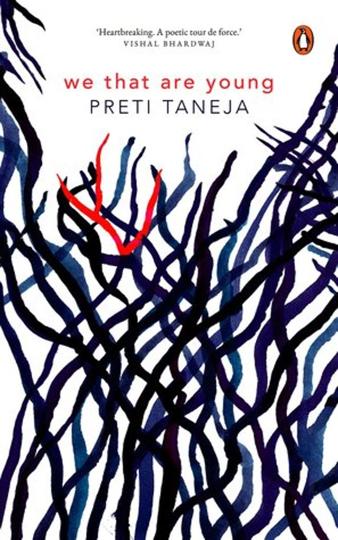An old king unwisely decides to divide his kingdom among his three daughters based on whose declaration of love flatters him the most. The youngest, his favourite, refuses to play along and is disinherited. Thus begins King Lear, one of William Shakespeare’s greatest tragedies. As Lear comes to terms with the consequences of his actions and slowly goes mad, he learns that one must judge people by their actions and not their words. The play, of course, is much more than just the story of resentful, ungrateful children and foolish, overbearing patriarchs, and explores the larger themes of power, sanity, justice, cruelty and suffering.
Even if you have not read the original, you will enjoy Taneja’s angry, brilliant rendition of it. It features a billionaire family, is set in the India of 2012, and told from the perspectives of the so-called villains: the two wicked daughters, who, in Shakespeare’s play, drive the old King mad by throwing him out on the streets.
Devraj Bapuji, the former prince of Napurthala and founder of the largest business empire in India, is already somewhat mad with power when the novel begins. He rules over his family and business like a true despot: entertaining a hundred handpicked protégés at lavish Tuesday Parties at his palatial farmhouse, giving pompous speeches, pummeling servants when irritated, and teasing his family with juvenile mind games that feed his God Complex when not lacerating them with his ‘rakshas’ temper.
The novel, divided into five parts, is told from the point of view of the novel’s younger generation: Devraj’s three daughters – Gargi, Radha and Sita – and the two sons of his right-hand man, Ranjit: Jeet and the illegitimate son, Jivan. Devraj’s mad ramblings and reminiscences are interjected randomly throughout the five narratives though they begin to make more sense as the story races towards its predestined ghastly end.
The narrative remains faithful to the original play’s twists and turns, and recreates them organically in our ruthless, violent world. But it is the way Taneja imagines these characters (especially the daughters) and makes them familiar and relatable that turns the original on its head, without changing a single detail of the basic story.
When a young Gargi Devraj wonders why her father’s friends keep accidentally “brushing her here, or there” (Is it because their arms are “so much longer than women’s they have to”), her sister (who understands they’ve lost the lottery of gender and that her angelic beauty is her currency in this world) laughs and laughs till she cries and tells her “it’s because they can.”
Halfway through Preti Taneja’s book, Gargi Devraj Grover, 33, most obedient daughter and wife, talented, conscientious, childless, successfully shouldering the charade of a marriage she was bartered into at 18, and utterly starved of affection, has her own Time’s Up moment. Tired of collecting dead peacocks her megalomaniac father has been massacring at their farmhouse in another of his famous tantrums, and worried sick about her headstrong youngest sister who has walked out on him, she decides to stop being a bechari and give it back to him. Or as chauvinists would say, she becomes a bitch.
Like the play, Taneja’s novel starts with the return of the illegitimate son. Jivan Singh returns to Delhi from America after 15 years to find that the city of his childhood has grown exponentially, with high rises, swanky malls, flyovers and the metro, and that the rich here are above the law. That is the side he wants to be on.
Quick to unlearn his American way of life, he becomes an amoral agent of fate, a sort of detonator to the discontent and unhappiness in the lives of Devraj’s elder daughters.
The novel is also a critique of contemporary India’s deep-rooted corruption, vast inequalities of wealth, social apathy, misogyny, and communalism. When Devraj begins to go mad (or madder), he does not go it alone. Through his fake anticorruption campaign, he takes the country with him as the narrative moves from Delhi to Amritsar and then to Kashmir. The original may have been written in 1606 and set in an England of an unspecified era, but it fits our times perfectly.
Taneja’s writing is fresh and lively and includes a generous bit of Hinglish. She takes the reader into the minds of each character – whether it is Jivan secretly grieving for his dead mother or a coked-up Radha trying to keep her grip on what’s happening around her – even as the narrative swirls back and forth from the continuous flow of their thoughts to the action taking place in the world around them.
At times, the need to stay true to the source material (and its vicious cruelty and absurdity) makes certain character developments and miscommunications seem forced.Still, because We That Are Young is set so close to home and offers no redemption, it is almost more disturbing than the original.



Leave a reply